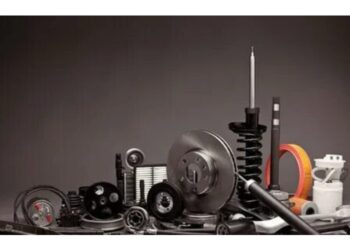Buckle up, tech enthusiasts! We’re about to dive into the electrifying world of embedded technology in electronics – a realm where innovation meets opportunity, and where the tiniest chips spark the grandest revolutions. If you’re looking for a career that’s not just cutting-edge but blazing a trail into the future, you’ve come to the right place! In today’s interconnected world, embedded technology silently powers countless devices and systems that we interact with daily. From smart home appliances to advanced industrial machinery, embedded systems form the backbone of modern technological innovation. This article explores the world of embedded technology, its applications, and the exciting career opportunities it offers.
What is Embedded Technology?
Embedded technology refers to computer systems designed for specific functions within larger mechanical or electrical systems. Unlike general-purpose computers, embedded systems are optimized for particular tasks, often with real-time computing constraints. These systems typically consist of a microprocessor or microcontroller, memory, input/output interfaces, and software tailored to the application.
Key Characteristics of Embedded Systems:
· Dedicated functionality
· Real-time operation
· Limited resources (memory, processing power)
· Low power consumption
· High reliability and durability
· Often operating without human intervention
Applications Across Industries: Powering Innovation and Efficiency
Embedded systems find applications across a diverse range of industries, driving innovation, enhancing operational efficiency, and improving user experiences.
· Automotive Electronics: Embedded systems play a pivotal role in automotive electronics, powering advanced driver assistance systems (ADAS), infotainment systems, and vehicle telematics. These systems enable intelligent features such as adaptive cruise control, collision avoidance, and autonomous driving technologies.
· Healthcare and Medical Devices: Medical IoT devices equipped with embedded systems monitor patient health, deliver personalized treatments, and transmit critical data securely to healthcare providers. Embedded systems in medical devices ensure reliability, accuracy, and compliance with regulatory standards for patient safety.
· Smart Home and Consumer Electronics: From smart thermostats to connected appliances, embedded systems enhance convenience, energy efficiency, and connectivity in modern homes. These systems enable seamless integration, remote monitoring, and intelligent automation for enhanced lifestyle experiences.
· Industrial Automation and Manufacturing: Embedded systems drive automation and process control in industrial environments, optimizing production efficiency, monitoring equipment performance, and enabling predictive maintenance. Industrial IoT platforms leverage embedded systems for real-time analytics, inventory management, and supply chain optimization.
Growing Importance of Embedded Technology
As we progress towards a more connected and automated world, the demand for embedded systems continues to surge. The IoT revolution, Industry 4.0, and the push for smarter, more efficient devices are driving factors behind this growth. According to market research firm Precedence Research, the global embedded systems market size was reached at USD 162.3 billion in 2022 and is expected to hit around USD 258.6 billion by 2032, poised to grow at a CAGR of 4.77% during the forecast period from 2023 to 2032.
Embedded Future: A Symphony of Progress
The embedded revolution is a marathon, not a sprint. By embracing the practical realities, fostering collaboration, and continuously pushing boundaries, we can unlock the full potential of embedded systems. These tiny titans have the power to revolutionize industries, improve our lives, and create a more connected, efficient, and sustainable future. The future is embedded, and it’s an orchestra waiting to be conducted. Are you ready to pick up the baton and join the symphony?
Call to Action: Be a Part of the Embedded Revolution
The future of embedded systems is bright, and the Electronics Sector Skills Council of India (ESSCI) is committed to equipping professionals with the necessary skills to lead this revolution. ESSCI offers a range of skill development programs in IoT hardware and Embedded Full Stack for candidates who meet specific educational and experience requirements. ESSCI provides four specialized courses – Embedded Software Engineer, Embedded Product Design Engineer-Technical Lead, Embedded Full Stack IoT Analyst and IoT Hardware Analyst. These roles involve preparing comprehensive blueprints of hardware, including schematic layouts, quality verification requirements, and performing PCB testing in compliance with regulatory standards. The design documentation process ensures all details are accurately recorded. Additionally, individuals in these roles are responsible for the efficient functioning and overall performance of the systems.
Career progression in embedded technology often involves moving from junior roles to senior engineering positions, then to team lead or project manager roles. Some professionals may specialize in particular industries or technologies, while others may transition into roles such as systems architect or technical director.
Skills and Qualifications:
To succeed in the embedded technology field, professionals typically need:
· Strong programming skills, especially in C and C++
· Knowledge of microcontroller architectures and peripherals
· Familiarity with real-time operating systems (RTOS)
· Understanding of digital electronics and circuit design
· Experience with debugging tools and techniques
· Proficiency in version control systems like Git
· Knowledge of communication protocols (I2C, SPI, CAN, etc.)
· Familiarity with IoT platforms and cloud technologies
· Problem-solving and analytical skills
· Ability to work in cross-functional teams
In conclusion, the embedded revolution is a testament to human ingenuity. By harnessing the power of these tiny titans, we can create a future that is not only technologically advanced but also efficient, sustainable, and improves our quality of life. Join the movement, become a part of the symphony, and let’s shape the future together, one embedded system at a time.












